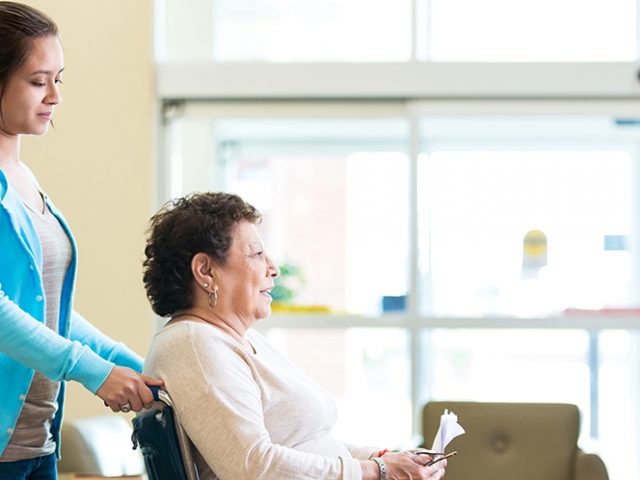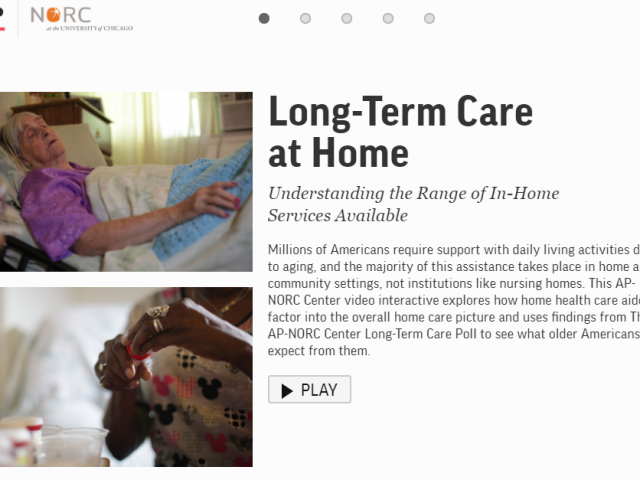
Results from the 2017 Long-Term Care trends poll find that two-thirds of Americans age 40 and older feel the country is not prepared for the rapid growth of the older adult population. The Associated Press-NORC Center for Public Affairs Research survey also finds that at the local level, less than half of older Americans say their community is doing a good job of meeting older adults’ needs for nursing homes, assisted living facilities, and home health care aides to provide long-term care. Additionally, a majority of older adults say they would like the federal government to devote a lot or a great deal of effort this year to helping people with the costs of ongoing living assistance.
The population of Americans age 65 and older is growing at an unprecedented rate. In 2014, there were 46.2 million adults age 65 and older, and this number is expected to more than double to comprise about 98 million older adults by the year 2060. The majority of these older adults will require at least some support with activities of daily living as they age—things like cooking, bathing, or remembering to take medicine.
To help policymakers, health care systems, and families address this issue, research conducted by The AP-NORC Center examines awareness of older Americans’ understanding of the long-term care system, their perceptions and misperceptions regarding the likelihood of needing long-term care services and the cost of those services, and their attitudes and behaviors regarding planning for long-term care.
Since 2013, The AP-NORC Center has conducted annual surveys to investigate experiences and attitudes regarding long-term care. These surveys have revealed that a majority of American adults age 40 and older hold several misperceptions about the extent of the long-term care services they are likely to need in the future and about the cost of those services. Few older Americans have done substantial planning or saving for their future needs, and less than half have even talked about the topic with their family. A majority support a variety of policy changes that would help in the financing of long-term care, as well as supporting changes in practice that favor a person-centered care approach.
The 2017 survey continues to track items from the previous years while also exploring new topics, including perceptions of the role of home health care aides in providing care, ratings of long-term care services in the local community, attitudes about the country’s preparedness to address the needs of the growing population of older adults, support for new policy proposals to help caregivers, and how much effort the federal government should devote to helping with long-term care costs.
To continue contributing new and actionable data to inform policymakers and the public about older Americans’ understanding of and experiences with long-term care, The AP-NORC Center, with funding from The SCAN Foundation, conducted a study including 1,341 interviews with a nationally representative sample of Americans age 40 and older from the AmeriSpeak® Panel.
Five Things You Should Know
From The AP-NORC Center’s 2017 Long-Term Care Poll
Among adults age 40 and older:
- Two-thirds feel the country is not prepared for the rapid growth of the older adult population.
- More than half believe that Medicare should be responsible for paying the costs of long-term care.
- More than 3 in 4 favor tax breaks for family caregivers, to encourage savings for long-term care, and for purchasing long-term care insurance.
- As in prior years, a majority (67 percent) say they have done only a little or no planning at all for their own care needs.
- Majorities of Democrats, Republicans, and independents support paid family leave programs and other policies to help caregivers.



